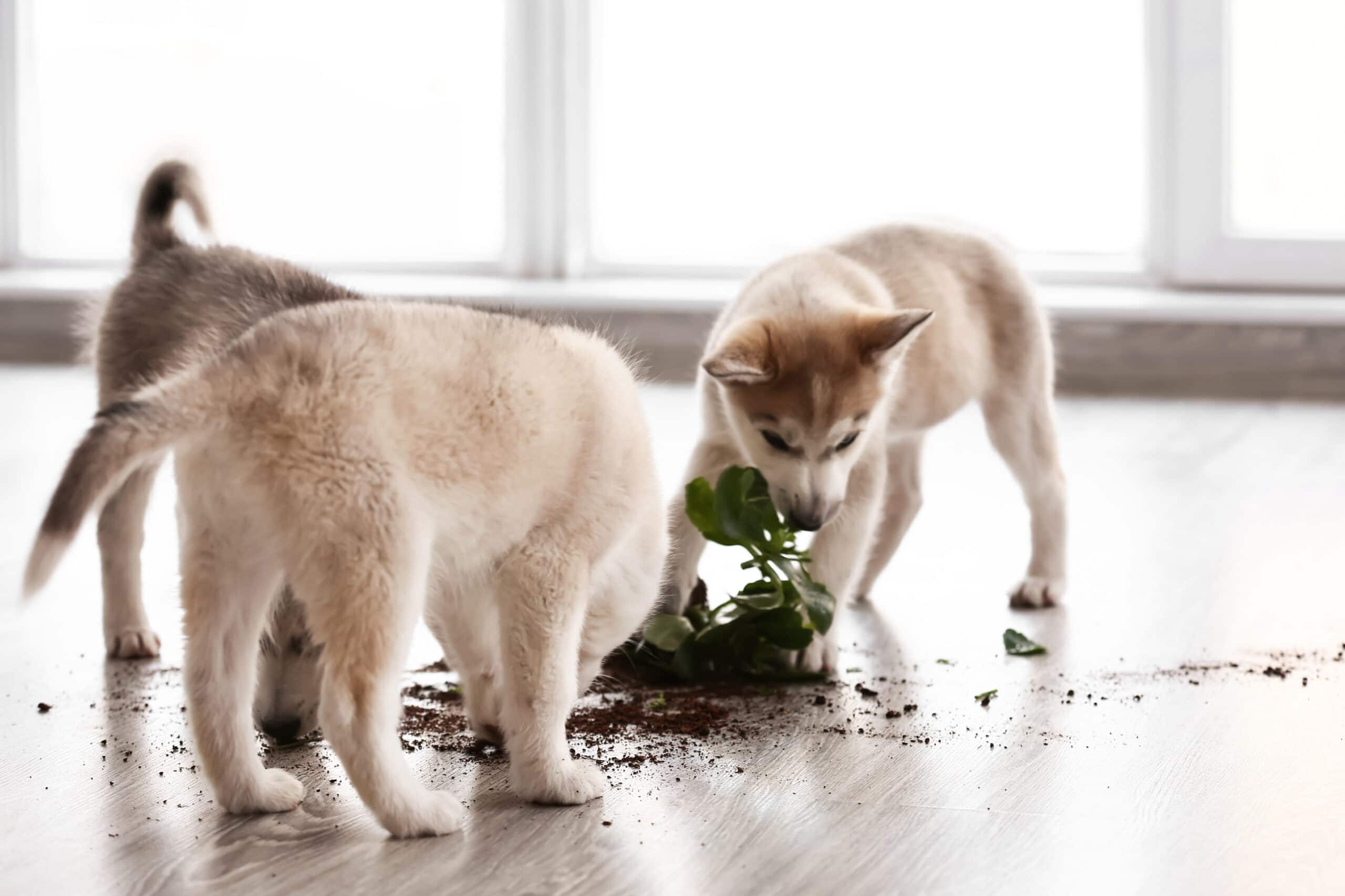Do you know which plants are toxic to dogs? If you’re a dog owner, you owe it to yourself and your dog to find out.
Plants are a great way to add color and life to any home. However, not all plants are safe for our canine friends.
Dogs are curious creatures and may nibble on plants out of curiosity or boredom. Unfortunately, some plants can be toxic to dogs and cause serious health issues.
Therefore, it is important for dog owners to be aware of which plants are harmful to their pets.
Understanding Plant Toxicity is the first step in keeping your dog safe. Some plants contain harmful chemicals that can cause mild to severe symptoms in dogs.
Symptoms of plant poisoning can include vomiting, diarrhea, lethargy, difficulty breathing, and even death.
Common Toxic Plants include azaleas, rhododendrons, lilies, daffodils, and tulips.
These plants are commonly found in gardens and homes, making it important for dog owners to be aware of their toxicity.
Recognizing Signs of Plant Poisoning is crucial for prompt treatment.
If you suspect your dog has ingested a toxic plant, it is important to seek veterinary care immediately.
Safe Alternatives to toxic plants can be a great way to add greenery to your home without putting your dog at risk.
Dog-friendly plants include spider plants, Boston ferns, and African violets.
By taking precautions and being aware of which plants are toxic to dogs, you can help keep your beloved pet safe and healthy.
Table of Contents
Understanding Plant Toxicity – Which Plants Are Toxic to Dogs?
Dogs are curious creatures, and they love to explore their surroundings, including plants.
Unfortunately, not all plants are safe for dogs, and some can cause serious health issues.
It is essential to understand plant toxicity and the symptoms that can occur if a dog ingests a toxic plant.
Plant toxicity refers to the harmful effects that plants can have on dogs when they are ingested or come into contact with their skin.
The severity of the toxicity depends on the type of plant and the amount ingested.
Some plants are mildly toxic and may cause only mild gastrointestinal upset, while others can be fatal.
Symptoms of plant toxicity in dogs can vary widely and may include vomiting, diarrhea, seizures, abdominal pain, tremors, gastrointestinal upset, depression, weakness, excessive drooling, slow heart rate, low blood pressure, and liver failure.
It is important to note that not all dogs will exhibit the same symptoms, and some may not show any symptoms at all.
If you suspect that your dog has ingested a toxic plant, it is crucial to seek veterinary care immediately.
To help prevent plant toxicity in dogs, it is essential to know which plants are toxic and to keep them out of reach.
The ASPCA provides a comprehensive list of toxic and non-toxic plants for dogs, which can be a valuable resource for pet owners.
In addition to keeping toxic plants out of reach, it is also essential to supervise dogs when they are outside and to discourage them from eating plants or grass.
Training dogs to “leave it” can also be helpful in preventing plant toxicity.
Common Toxic Plants
As a responsible dog owner, it’s essential to be aware of the plants that are toxic to dogs and keep them away from your beloved companion.
Here are some of the most common toxic plants that you should be aware of:
 Tulip and Hyacinth: These early-blooming flowers contain toxins that can cause irritation to the mouth and esophagus of dogs. The bulb is the most toxic part, but any part of the plant can be harmful.
Tulip and Hyacinth: These early-blooming flowers contain toxins that can cause irritation to the mouth and esophagus of dogs. The bulb is the most toxic part, but any part of the plant can be harmful. 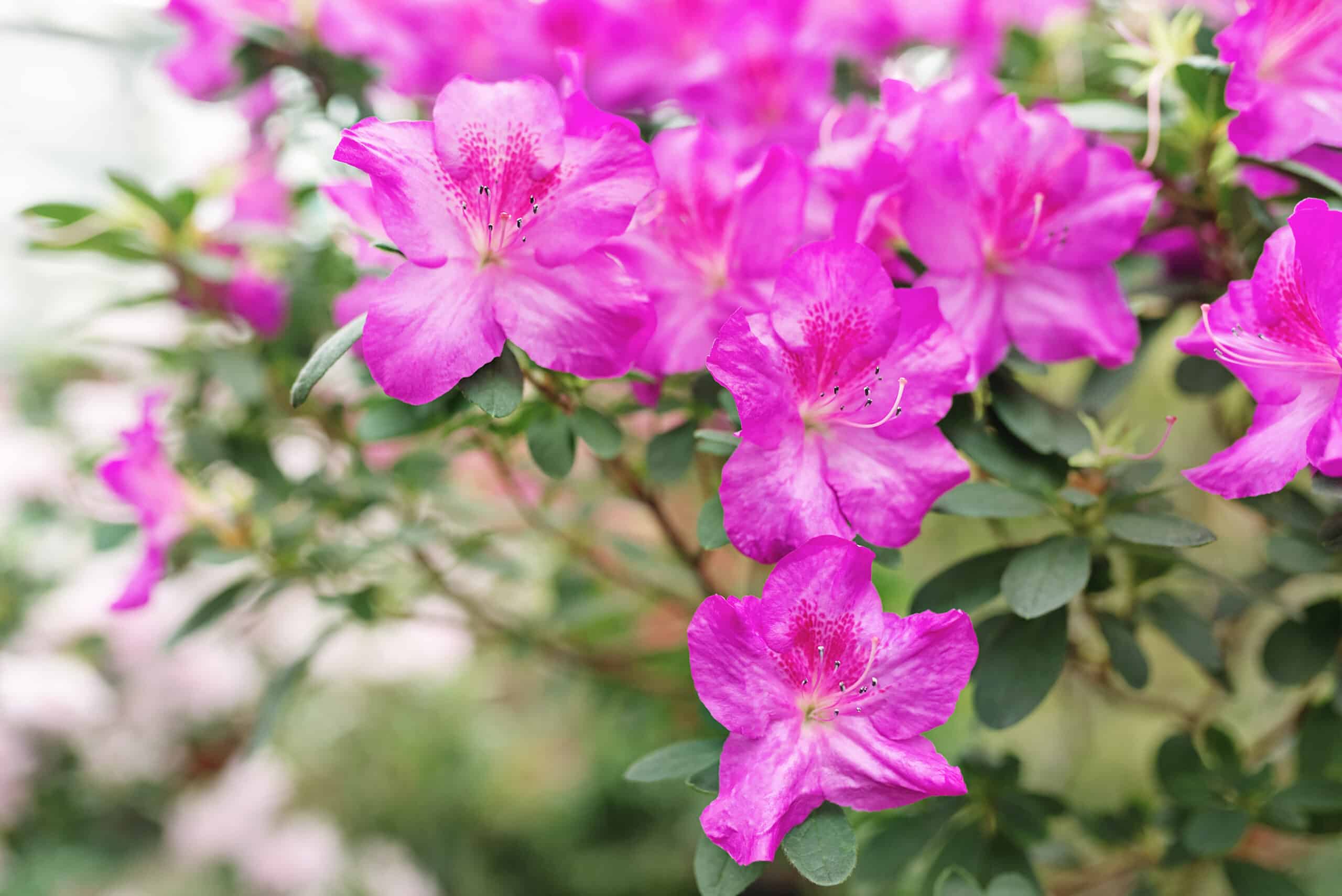 Azalea: All parts of the azalea plant are toxic to dogs, and ingestion can lead to vomiting, diarrhea, and even death in severe cases.
Azalea: All parts of the azalea plant are toxic to dogs, and ingestion can lead to vomiting, diarrhea, and even death in severe cases.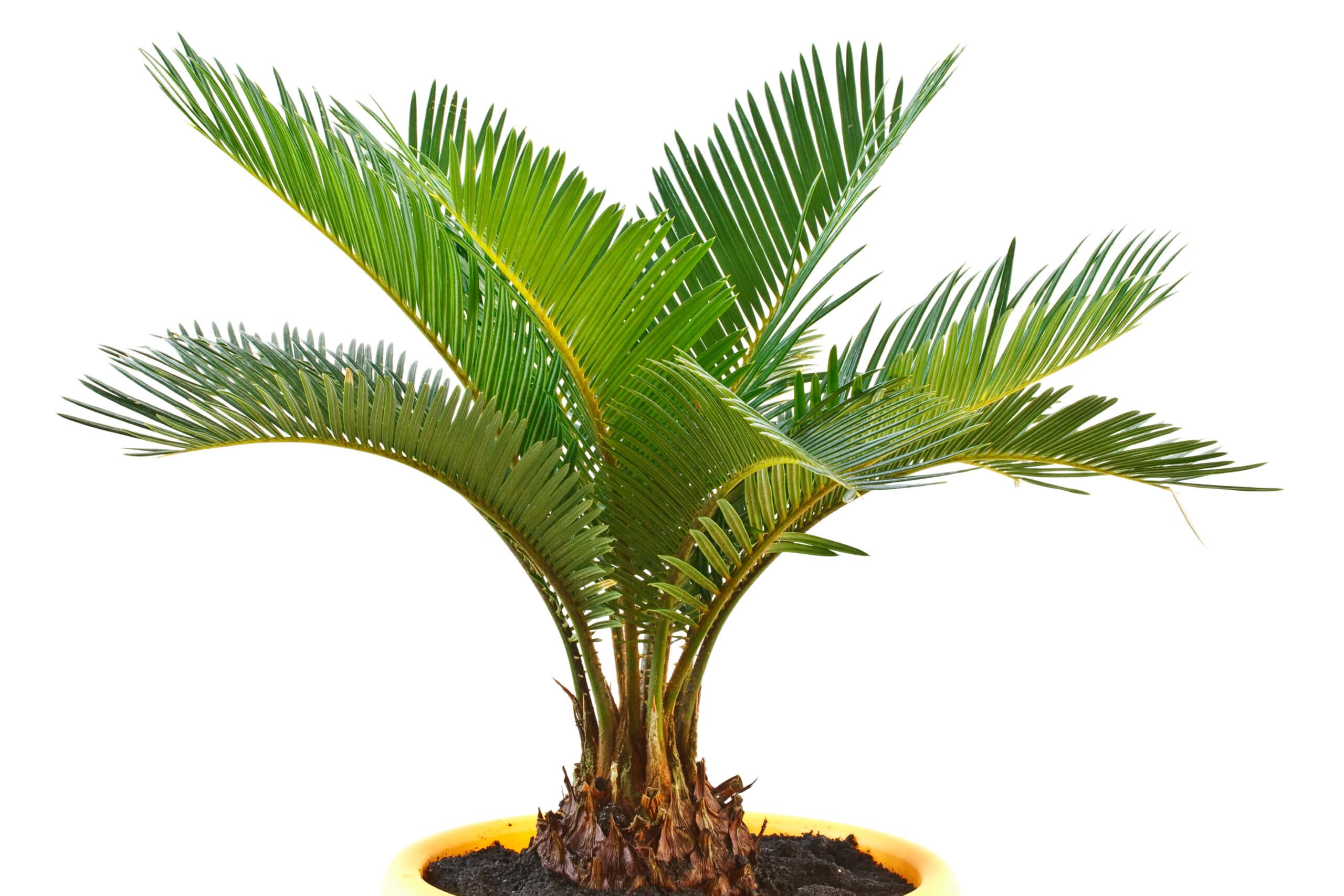 Sago Palm: The sago palm is a popular ornamental plant, but it’s highly toxic to dogs. Ingestion can cause liver failure and death.
Sago Palm: The sago palm is a popular ornamental plant, but it’s highly toxic to dogs. Ingestion can cause liver failure and death.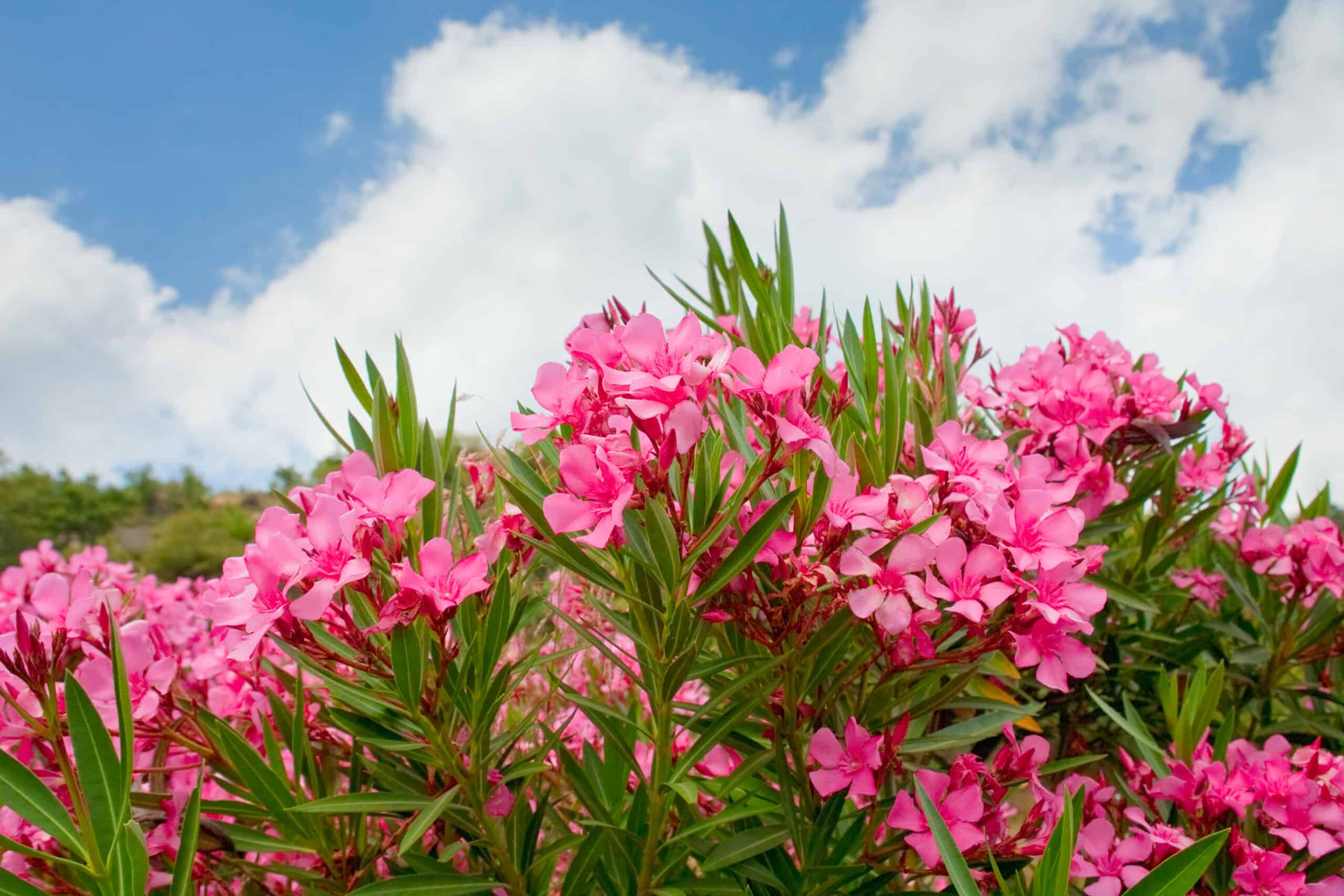 Oleander: Oleander is a beautiful flowering shrub, but it’s one of the most toxic plants to dogs. Ingestion can lead to heart failure and death.
Oleander: Oleander is a beautiful flowering shrub, but it’s one of the most toxic plants to dogs. Ingestion can lead to heart failure and death. Lily: Many species of lilies are toxic to dogs, and ingestion can cause kidney failure. Even a small amount can be fatal.
Lily: Many species of lilies are toxic to dogs, and ingestion can cause kidney failure. Even a small amount can be fatal.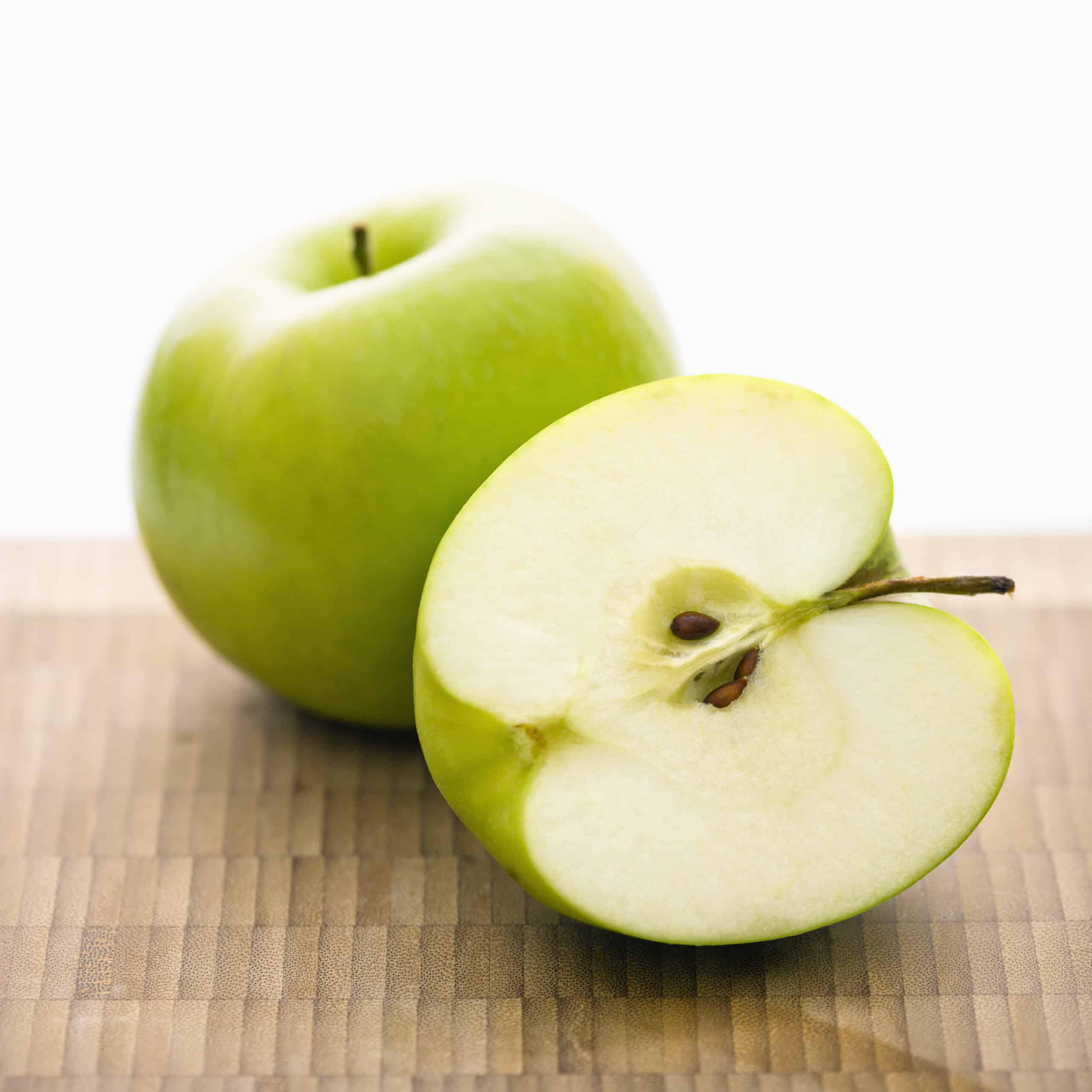 Apple: While the flesh of the apple is safe for dogs, the seeds contain cyanide, which can be harmful if ingested in large quantities.
Apple: While the flesh of the apple is safe for dogs, the seeds contain cyanide, which can be harmful if ingested in large quantities.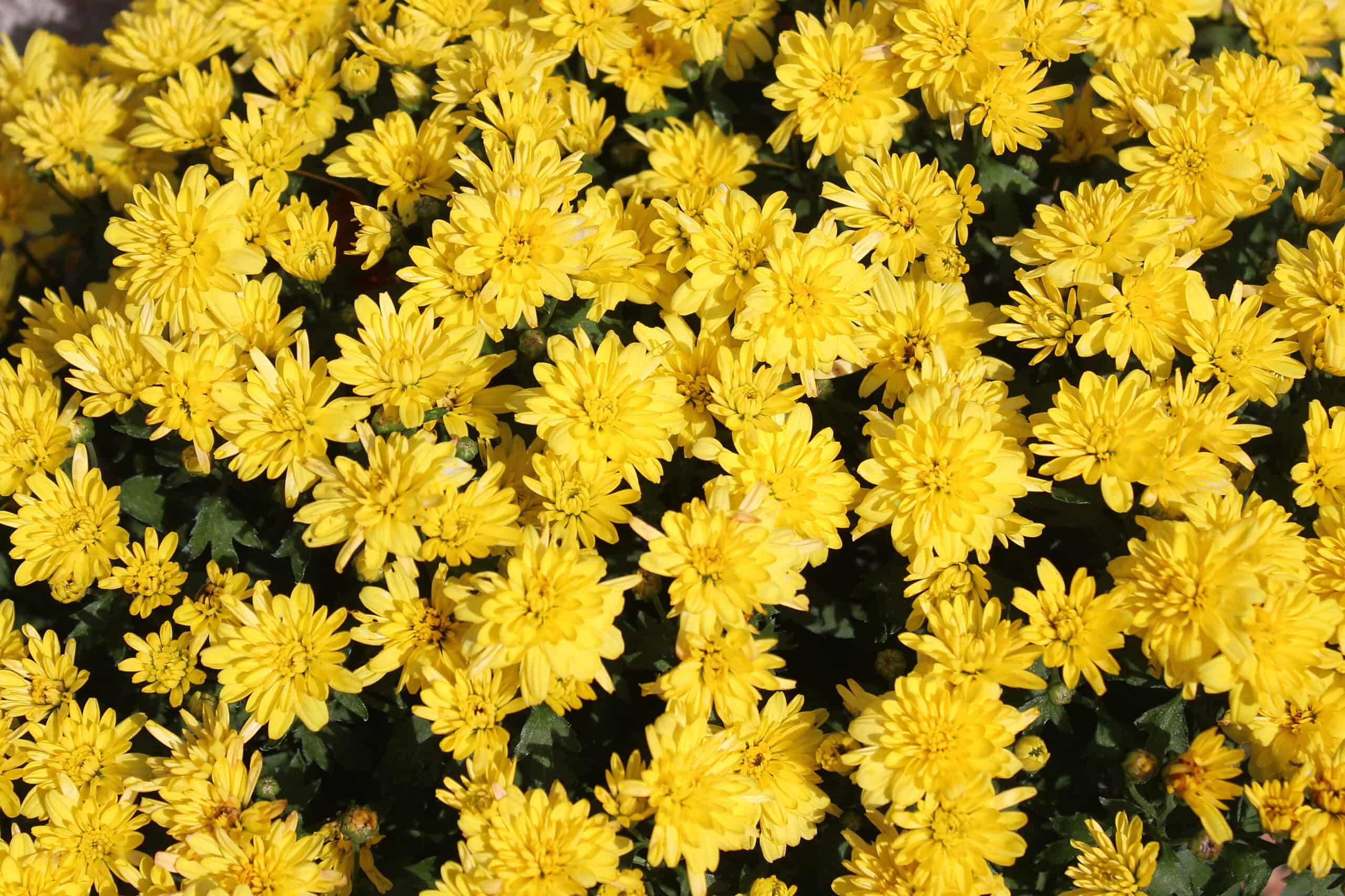 Chrysanthemum: These popular flowers contain toxins that can cause vomiting, diarrhea, and even seizures in dogs.
Chrysanthemum: These popular flowers contain toxins that can cause vomiting, diarrhea, and even seizures in dogs.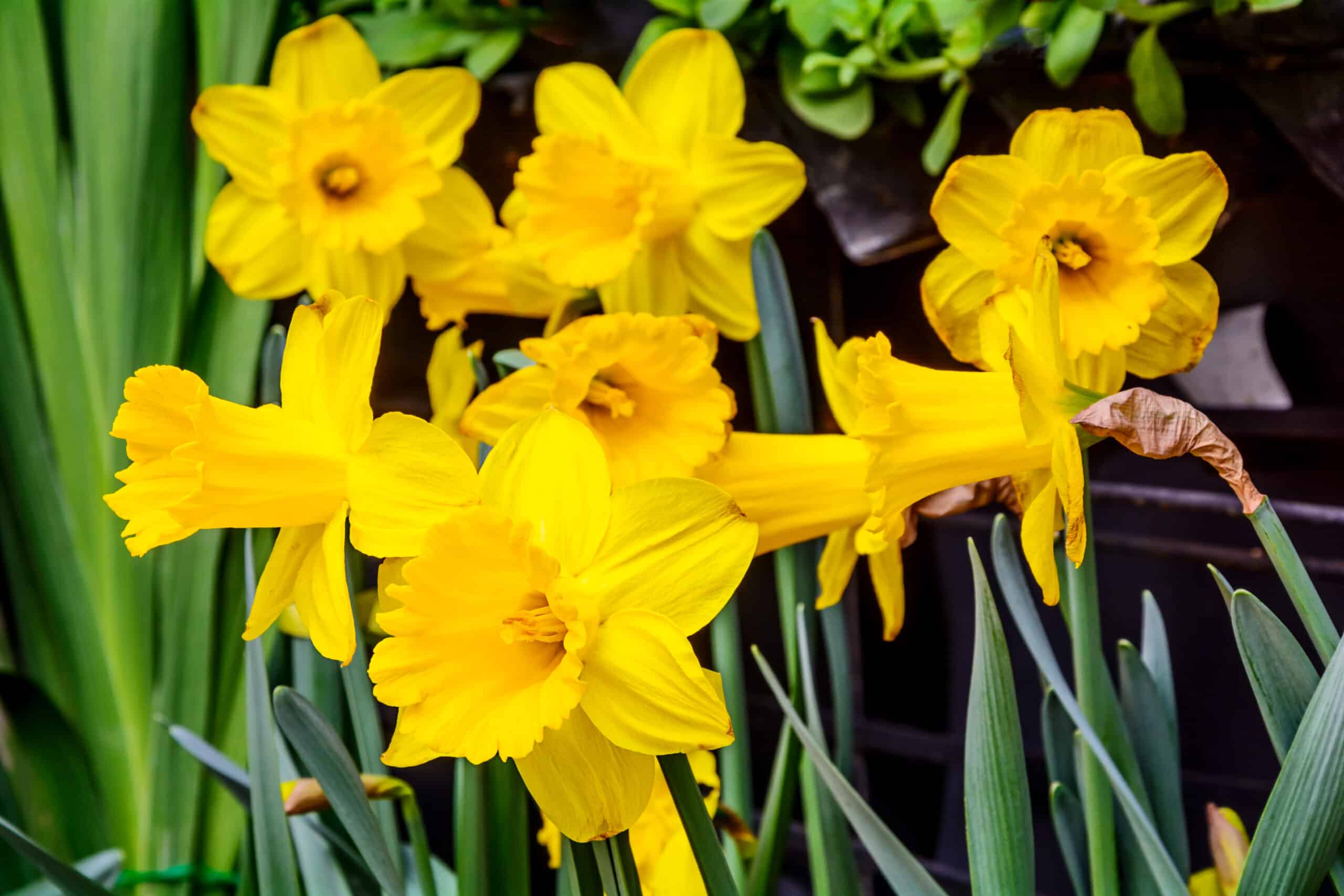 Daffodil: The bulbs of daffodils are toxic to dogs and can cause vomiting, diarrhea, and even cardiac arrhythmias.
Daffodil: The bulbs of daffodils are toxic to dogs and can cause vomiting, diarrhea, and even cardiac arrhythmias.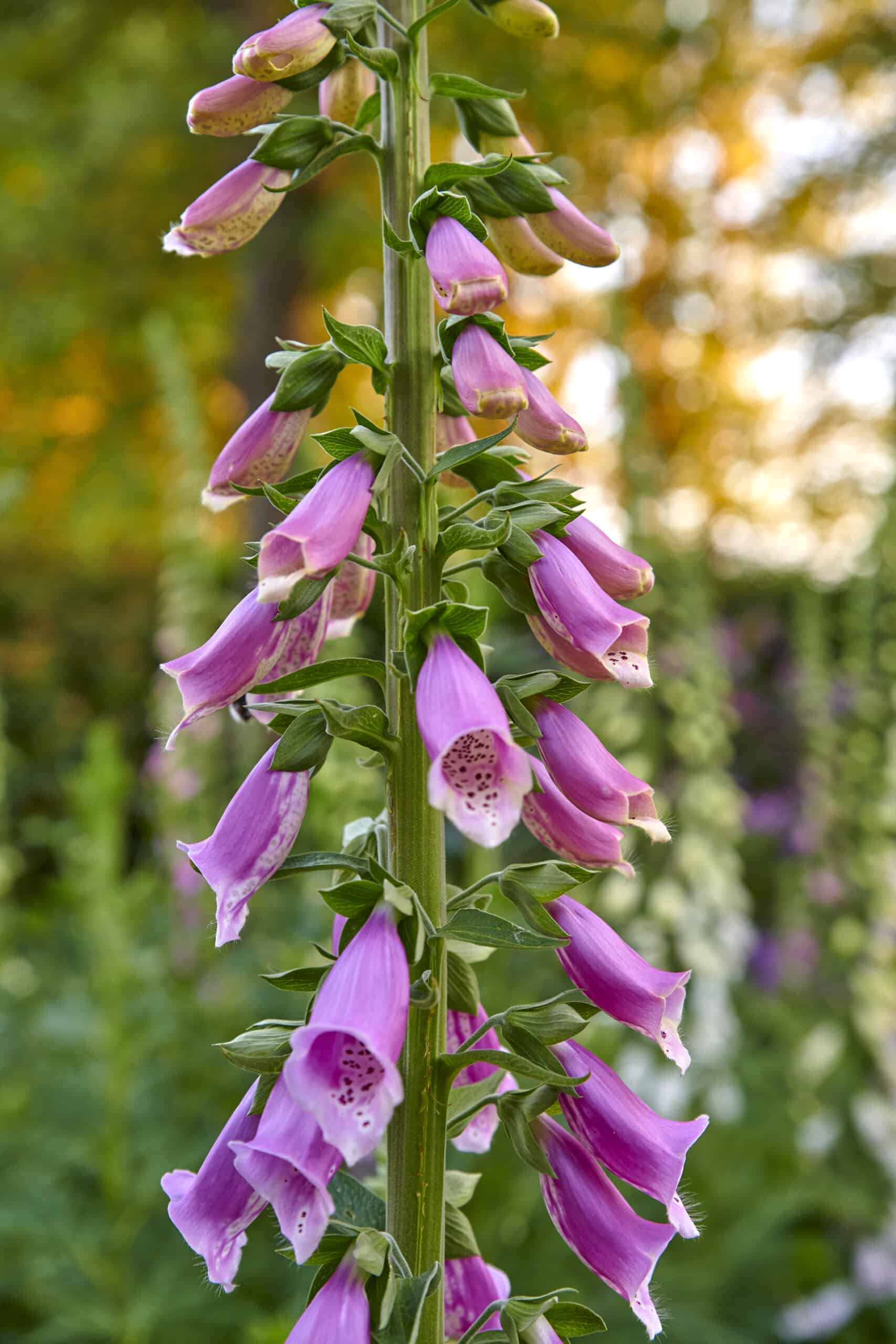 Foxglove: Foxglove is a beautiful flowering plant, but it contains cardiac glycosides that can be harmful to dogs if ingested.
Foxglove: Foxglove is a beautiful flowering plant, but it contains cardiac glycosides that can be harmful to dogs if ingested. Rhododendron: All parts of the rhododendron plant are toxic to dogs, and ingestion can cause vomiting, diarrhea, and even death.
Rhododendron: All parts of the rhododendron plant are toxic to dogs, and ingestion can cause vomiting, diarrhea, and even death.
Other common toxic plants that you should be aware of include holly, ivy, yew, marijuana, aloe, apricot, calla lily, autumn crocus, begonia, iris, hyacinth, black walnut, chinaberry, pothos, rhubarb, box, garlic, dieffenbachia, milkweed, arum, alocasia, aloe vera, amaryllis, English holly, arum lily, pig lily, geranium, hydrangea, peony, horse chestnut, buckeye, Japanese yew, castor bean, cyclamen, hemlock, English ivy, mistletoe, Jerusalem cherry, larkspur, peace lily, schefflera, and privet.
If you suspect that your dog has ingested a toxic plant, contact your veterinarian immediately.
Time is of the essence, and prompt treatment can be the difference between life and death.
Recognizing Signs of Plant Poisoning
It’s important for dog owners to be able to recognize the signs of plant poisoning in their pets.
If you suspect your dog has ingested a toxic plant, it’s crucial to seek veterinary care immediately.
Some common signs of plant poisoning in dogs include vomiting, diarrhea, drooling, loss of appetite, lethargy, and difficulty breathing. In severe cases, dogs may experience seizures, tremors, or collapse.
If you notice any of these symptoms in your dog, it’s important to contact your veterinarian or a pet poison helpline right away.
The ASPCA Animal Poison Control Center is a great resource for pet owners who suspect their dog has ingested a toxic plant.
They can provide guidance on what to do next and help determine if the situation is life-threatening.
It’s important to note that not all dogs will exhibit the same symptoms of plant poisoning.
Some dogs may show no symptoms at all, while others may experience more severe reactions.
If you suspect your dog has ingested a toxic plant, it’s always better to err on the side of caution and seek veterinary care immediately.
Safe Alternatives
Fortunately, there are many non-toxic plants that dog owners can choose to keep in their gardens or homes. Here are some safe alternatives to consider:
Petunias

Petunias are an excellent alternative to tulips in your garden as they offer a wide range of vibrant colors and beautiful blooms without posing any toxic risks to your dogs.
These annual flowers grown in USDA Zones 3-8 and are widely available in garden centers and nurseries.
African Violet
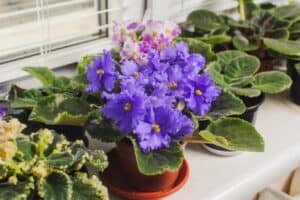
African violets are a popular indoor plant that can add a pop of color to any room.
These plants are non-toxic to dogs and are easy to care for, making them a great choice for pet owners.
African violets prefer bright, indirect light and moist, well-draining soil.
Bamboo Palm
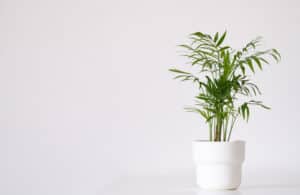
Bamboo palm is a non-toxic plant that can help purify the air in your home.
This plant is easy to care for and can grow up to 12 feet tall. Bamboo palm prefers bright, indirect light and moist soil.
Boston Fern
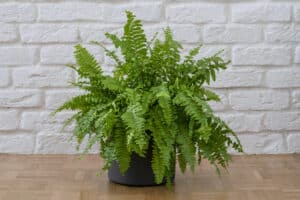
Boston fern is a non-toxic plant that can add a touch of greenery to your home.
This plant is easy to care for and can grow up to 3 feet tall. Boston fern prefers bright, indirect light and moist soil.
Spider Plant
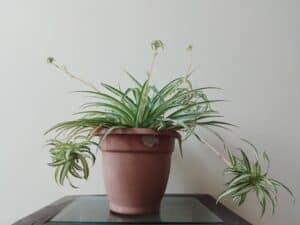
Spider plant is a non-toxic plant that can help purify the air in your home. This plant is easy to care for and can grow up to 2 feet tall. Spider plant prefers bright, indirect light and moist soil.
Seasonal Considerations
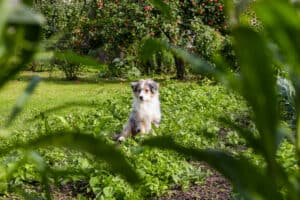
Spring is a time when many plants and flowers start to bloom, which can be a beautiful sight to see.
However, it’s important to be aware that some of these plants can be toxic to dogs.
It’s crucial to keep an eye on your dog during this time of year and ensure they don’t ingest any harmful plants.
One common Spring plant to watch out for is the lily of the valley. This plant can cause cardiac arrhythmias, decreased heart rate, and even seizures if ingested by dogs.
Another flower to be cautious of is the daffodil. The bulbs of this plant contain lycorine, which can cause vomiting, diarrhea, and even cardiac arrhythmias in dogs.
During the Summer months, it’s important to be aware of the plants that can be found in your garden.
For example, the castor bean plant 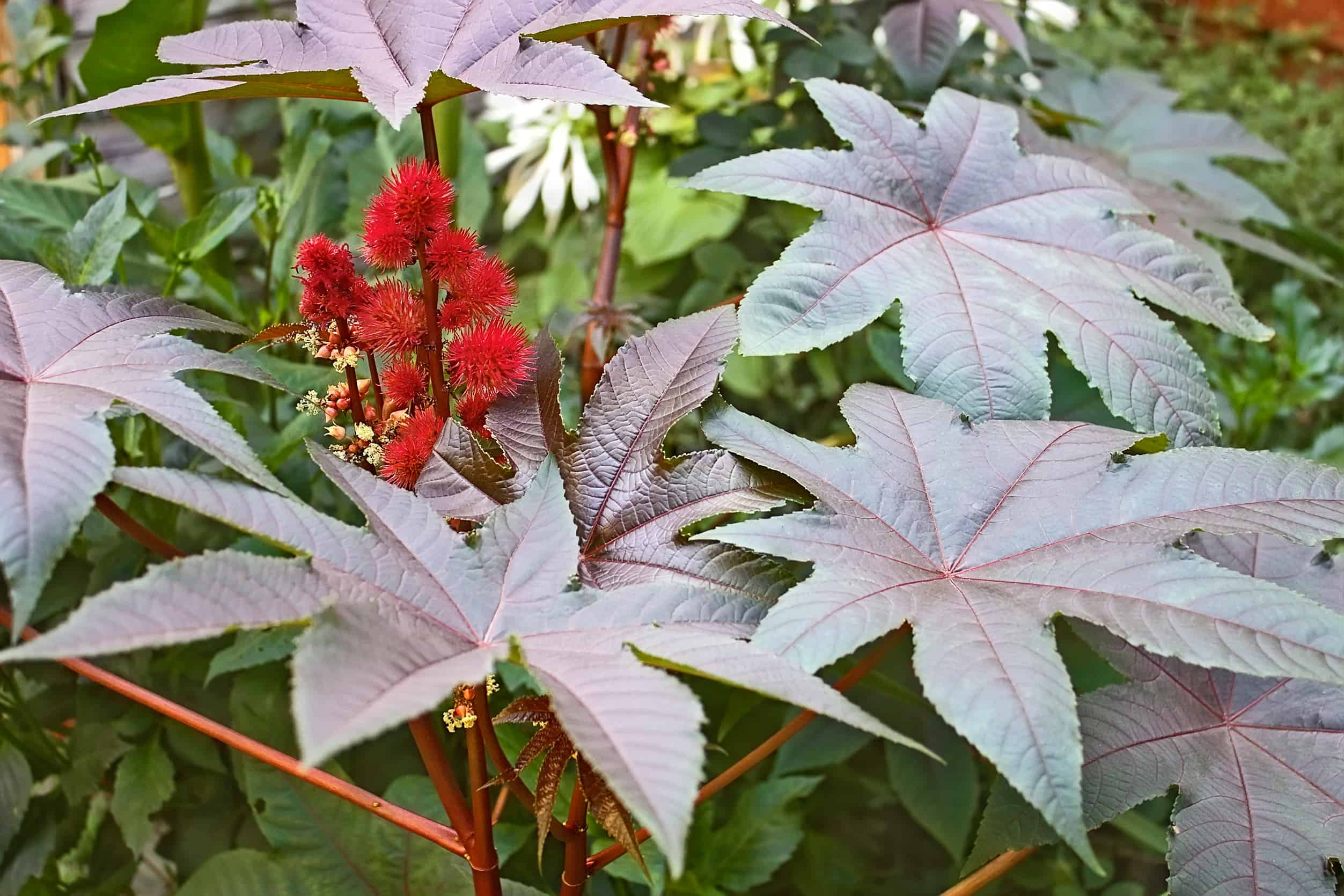 is highly toxic to dogs and can cause severe vomiting, diarrhea, and even death in some cases.
is highly toxic to dogs and can cause severe vomiting, diarrhea, and even death in some cases.
Another plant to be cautious of is the oleander, which can cause gastrointestinal issues, cardiac arrhythmias, and even death if ingested by dogs.
In the Fall, it’s important to be aware of the mushrooms that can grow in your yard.
While not all mushrooms are toxic to dogs, some can cause severe gastrointestinal issues, seizures, and even death.
It’s important to remove any mushrooms that you see growing in your yard and to keep your dog away from them.
During the Winter months, it’s important to be aware of the plants that can be found in your home.
For example, poinsettias are often used as decorations during the holiday season, but they can be toxic to dogs if ingested.
Symptoms of poinsettia poisoning include vomiting, diarrhea, and even depression.
Toxic Fruits and Herbs
Here are some fruits and herbs that are toxic to dogs:
Grapes and Raisins
Grapes and raisins can cause kidney failure in dogs. Even a small amount can be toxic, so it is best to avoid giving your dog any grapes or raisins.
Avocado
Avocado contains persin, which can cause vomiting and diarrhea in dogs. The pit of the avocado can also cause an obstruction in the digestive tract if ingested by dogs.
Garlic, Chives, and Onions
Garlic, chives, and onions contain compounds that can damage a dog’s red blood cells, leading to anemia. Even small amounts of these ingredients can be harmful to dogs.
Hops
Hops, commonly used in beer brewing, can cause increased heart rate, panting, and fever in dogs. In severe cases, it can lead to seizures and death.
It is important to note that this is not an exhaustive list of toxic fruits and herbs for dogs.
If you suspect that your dog has ingested something toxic, it is best to contact your veterinarian immediately.
Toxic Houseplants
Many common houseplants can be toxic to dogs if ingested. It is important to be aware of these plants and keep them out of reach of your furry friend.
Some popular houseplants that are toxic to dogs include Dieffenbachia, Peace Lily, Golden Pothos, and Sansevieria Trifasciata.
Dieffenbachia, also known as Dumb Cane, contains calcium oxalate crystals that can cause oral irritation, swelling, and difficulty swallowing if ingested.
Peace Lily can cause drooling, vomiting, and difficulty swallowing due to the presence of calcium oxalate crystals.
Golden Pothos contains insoluble calcium oxalate crystals that can cause oral irritation, swelling, and difficulty swallowing if ingested.
Sansevieria Trifasciata, also known as Snake Plant, contains saponins which can cause vomiting, diarrhea, and drooling if ingested.
To prevent accidental ingestion of toxic houseplants, it is recommended to keep them out of reach of your dog.
Consider placing them on high shelves or using hanging baskets. You can also train your dog to avoid plants by using positive reinforcement techniques.
Appearance of Toxic Plants
It can be difficult to determine if a plant is toxic to dogs just by looking at it.
Some toxic plants have a harmless appearance, while some non-toxic plants can be mistaken for toxic ones.
It is important to be aware of the common toxic plants and their appearance to keep your doggie safe.
Toxic plants can come in various forms such as trees, shrubs, flowers, and even houseplants.
Some toxic plants have a distinct appearance that can help dog owners identify them.
For example, the sago palm  has a unique look with a thick trunk and feathery leaves that grow in a circular pattern.
has a unique look with a thick trunk and feathery leaves that grow in a circular pattern.
The leaves of the sago palm are dark green and glossy, and the plant produces a bright red or orange fruit that is toxic to dogs.
Other toxic plants may have less distinctive features, making them harder to identify.
For example, the castor bean plant  is a common ornamental plant that can be found in gardens and landscaping.
is a common ornamental plant that can be found in gardens and landscaping.
The plant has large, shiny leaves and produces spiky green fruits that contain highly toxic seeds.
The seeds are small and can be easily ingested by dogs, causing severe symptoms such as vomiting, diarrhea, and even seizures.
Preventing Plant Poisoning
Preventing plant poisoning is an important aspect of pet care. Dogs are naturally curious and may chew on plants, flowers, or leaves, which can be toxic and harmful to their health.
Here are some tips to prevent plant poisoning in dogs:
Identify Toxic Plants
The first step in preventing plant poisoning is to identify toxic plants.
Some common toxic plants include lilies, tulips, hyacinths, daffodils, azaleas, rhododendrons, and oleanders.
It is important to research the plants in your garden or home and remove any that are toxic to dogs.
The American Kennel Club and ASPCA provide comprehensive lists of toxic and non-toxic plants for dogs.
Restrict Access to Toxic Plants
Restricting access to toxic plants is another effective way to prevent plant poisoning.
If you have toxic plants in your garden, consider fencing off the area or using a barrier to prevent your dog from accessing them.
If you have indoor plants, make sure they are placed out of reach of your dog.
Provide Safe Alternatives
Providing safe alternatives is a great way to prevent your dog from chewing on toxic plants.
Consider providing your dog with safe chew toys or bones to satisfy their chewing instincts.
You can also plant dog-friendly herbs, such as parsley, basil, and oregano, which are safe for dogs to chew on.
Train Your Dog
Training your dog is an important aspect of preventing plant poisoning.
Teach your dog basic commands, such as “leave it” or “drop it,” to prevent them from chewing on toxic plants.
Positive reinforcement training can also help encourage good behavior and prevent your dog from chewing on plants.
Emergency Measures
If a dog ingests a toxic plant, it is essential to act quickly to prevent further harm. The following emergency measures can be taken:
- Contact a veterinarian: If a dog has ingested a toxic plant, it is essential to contact a veterinarian immediately. The veterinarian can provide guidance on what to do next and may recommend bringing the dog in for treatment.
- Call the Pet Poison Helpline 855-764-7661 or ASPCA Animal Poison Control Center 888- 426-4435: If a veterinarian is not available, call the Pet Poison Helpline or ASPCA Animal Poison Control Center. These organizations can provide guidance on what to do next and may recommend bringing the dog in for treatment.
- Induce vomiting: If the dog has ingested a toxic plant within the last hour and is not showing any symptoms, the veterinarian or poison control center may recommend inducing vomiting. This can be done by giving the dog hydrogen peroxide or another emetic.
- Administer activated charcoal: Activated charcoal can be given to a dog to help absorb the toxins in their stomach. This should only be done under the guidance of a veterinarian.
- Monitor the dog for symptoms: If a dog has ingested a toxic plant, it is important to monitor them for symptoms. Symptoms can include vomiting, diarrhea, lethargy, and pain. If the dog shows any of these symptoms, it is essential to contact a veterinarian immediately.
- Seek immediate veterinary care: If a dog shows any life-threatening symptoms, such as difficulty breathing or seizures, it is essential to seek immediate veterinary care.
In conclusion, if a dog ingests a toxic plant, it is essential to act quickly to prevent further harm.
Contact a veterinarian or poison control center, induce vomiting if recommended, administer activated charcoal if recommended, monitor the dog for symptoms, and seek immediate veterinary care if necessary.
Frequently Asked Questions
What are the top 10 most poisonous plants for dogs?
According to the American Kennel Club, the top 10 most poisonous plants for dogs are:
- Sago Palm
- Azalea
- Autumn Crocus
- Cyclamen
- Kalanchoe
- Oleander
- Dieffenbachia
- Daffodil
- Lily of the Valley
- Spathiphyllum
Are there any herbs that are toxic to dogs?
Yes, there are some herbs that are toxic to dogs. Some examples include:
- Garlic
- Chives
- Onion
- Yarrow
- Pennyroyal
- Comfrey
- Tansy
- Thuja
- Wormwood
- Wintergreen
What are some non-toxic flowers for dogs?
Some examples of non-toxic flowers for dogs include:
- Sunflowers
- Roses
- Gerbera Daisies
- Snapdragons
- Petunias
- Marigolds
- Zinnias
- Calendula
- Nasturtiums
- Pansies
Are there any plants that are toxic to cats?
Yes, there are many plants that are toxic to cats. Some examples include:
- Lilies
- Aloe Vera
- Pothos
- English Ivy
- Philodendron
- Jade Plant
- Snake Plant
- Begonia
- Dumb Cane
- Peace Lily
What house plants are highly toxic to dogs?
Some examples of house plants that are highly toxic to dogs include:
- Sago Palm
- Dieffenbachia
- Philodendron
- Pothos
- ZZ Plant
- Peace Lily
- Snake Plant
- Aloe Vera
- English Ivy
- Jade Plant

